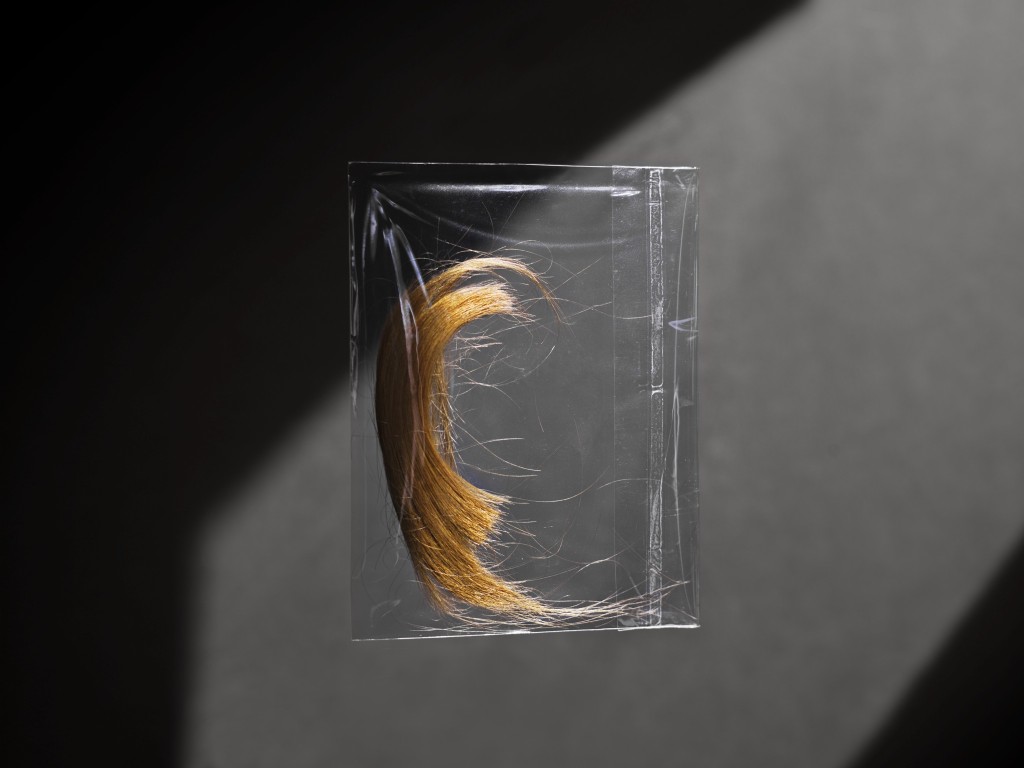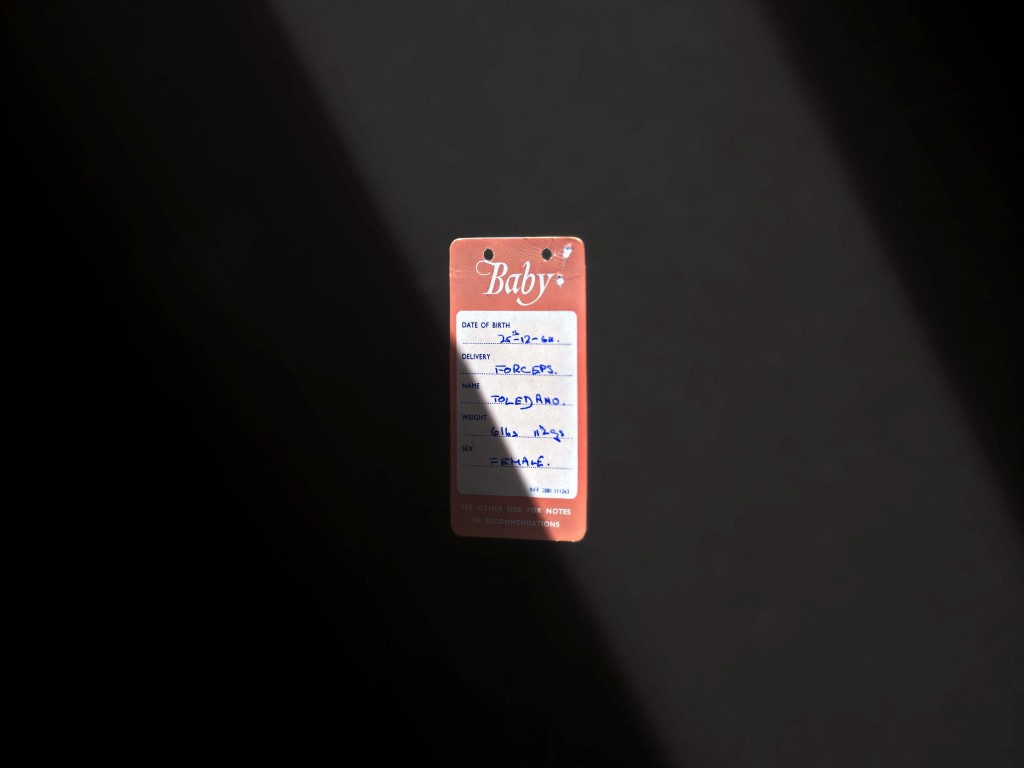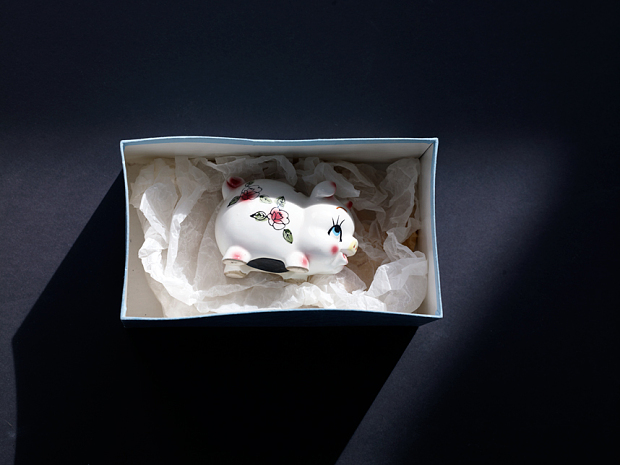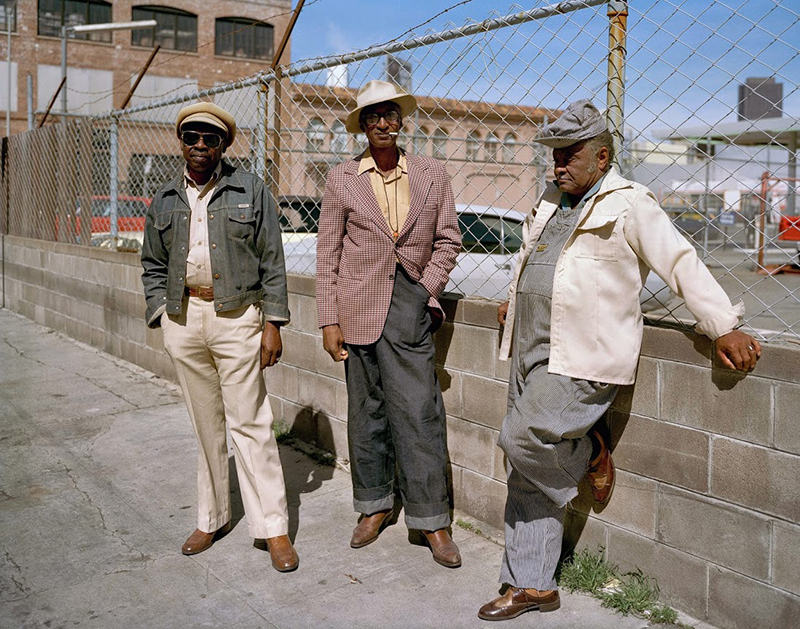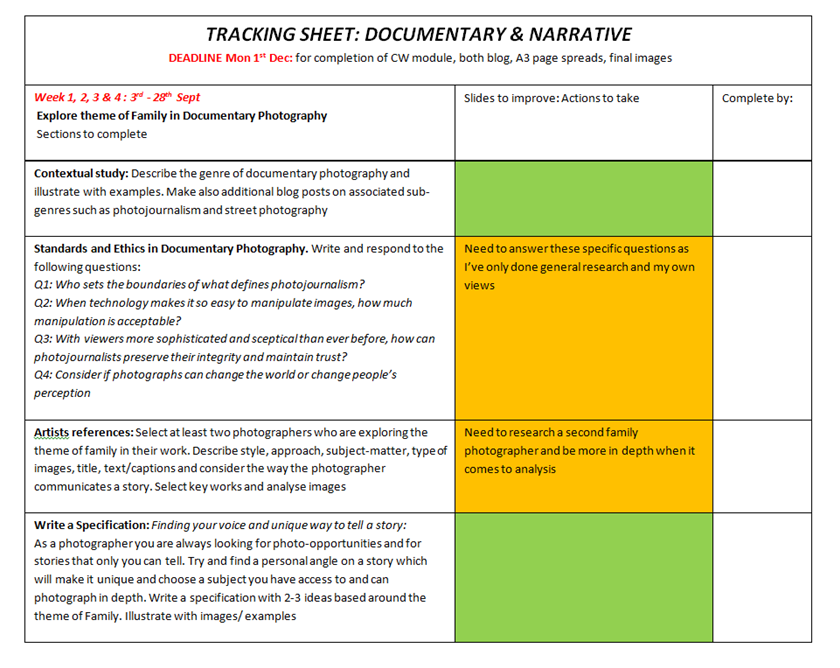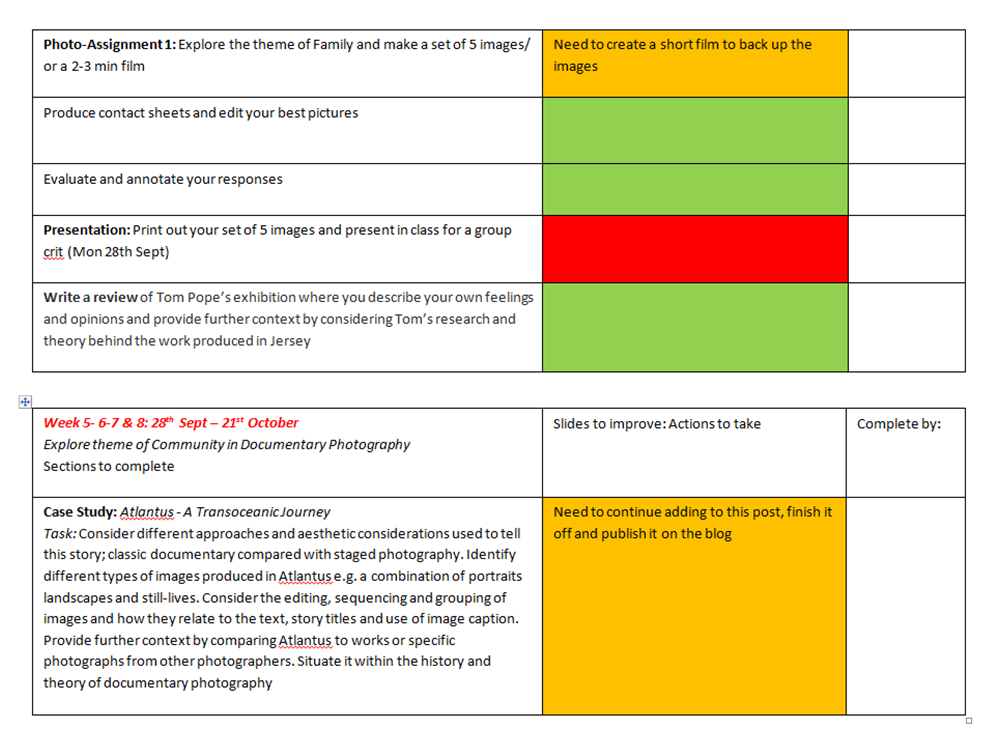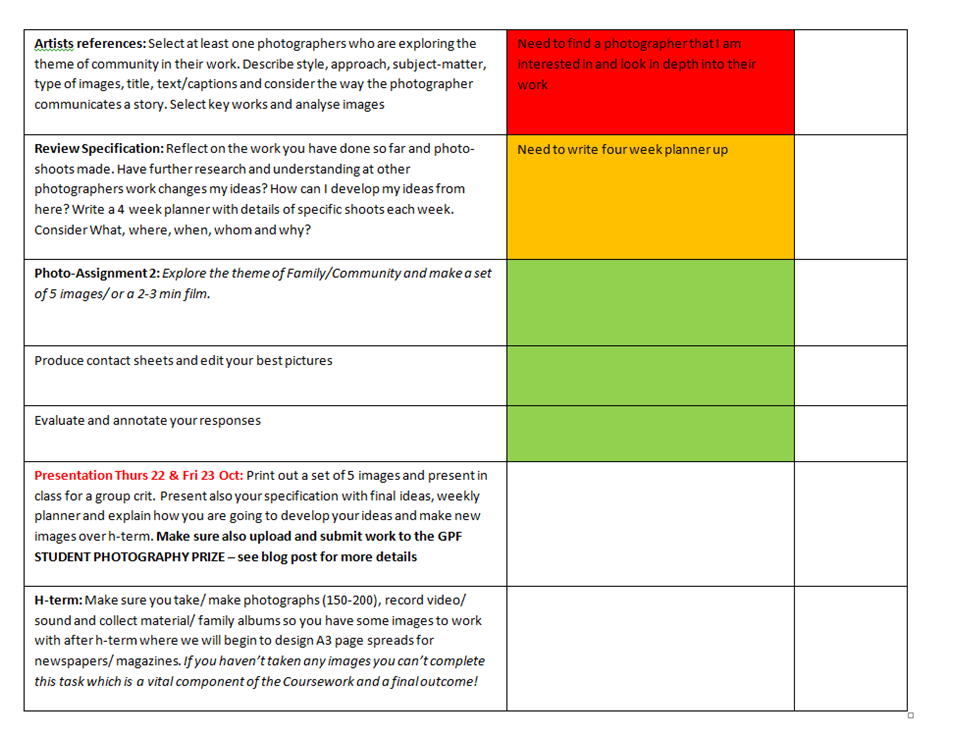To further analyze the theme of Family, I will be doing a photo-shoot over the half-term.
The setting:
I’ll be photographing at my extended family’s house. Their family home is quite large and also contains an upstairs space for lodgers. They recently moved into it and are still in the process of refurbishing the whole interior. This create’s a very hectic and certainly unorganized environment. I’ll be photographing both inside and outside of the home.
Relationships:
My male cousin and his wife live there with their four year old daughter. Also, my cousin is currently in the process of divorcing his wife. Consequently, the mood in the house is quite low and gloomy. Additionally, his parents live there too, who are my godparent’s. Finally, they have a small dog as a pet.
Themes that appear:
Faith – Essentially there is a separation between the region’s in the house. Whilst the two adult women have recently transferred mentally into practicing Christians, whilst the men have remained as Catholics.
Addiction – For instance alcoholism and a need for Tabaco in cigarettes.
Time frame:
I’m going to spend a large amount of hours on this certain subject. I would like to capture moments in the afternoon through to dusk. This is because, at this time, everyone tends to be at home. Also, normally other family member’s come and visit which adds to the family environment and commotion.
Approach:
Most of the picture that I’ll be taking will be non-staged. This is because I want to capture my family in their natural environment and not alter their emotional or physical state’s by telling them how to pose. I want the images to be very pure in telling the truth and show how the people interact with each other. I’ll use my camera as a witness and simply record the moments that they create.
Alternatively, I’ll also be taking some staged pictures. For instance, I’d like to create some portraits of a single individuals. I believe that it’s better to use a staged approach in these contexts, specially because it becomes hard to create an interesting shot of someone that isn’t positioned in an intriguing way.
I’ll also be shooting my family’s interactions with the dog and the dog on it’s own.
Shots:
First I’ll begin by taking a extreme long shot of the whole house accompanied with neighboring houses in the background. This will establish the scene for the viewers. Then i’ll go a bit closer and photograph solely their house.
Once inside, I’ll be photographing with may different shooting styles for instance: extreme long shots, long shots, medium shot, medium close-up, close-up, extreme close-up, over the shoulder, singles, 2-shots, 3 shots + and more. Angles can create dramatic effects so I’ll try views from: above, below, eye-level, etc.
Style:
For the majority of the pictures, I’ll be capturing them in a professional manner and make sure that the compositional elements are well balanced. This includes uses the correct focus and assuring that the balancing elements are right. Also, creating a good rule of thirds.
However, for some I’ll just be relaxing and taking an amateur approach. So if I see something I like, I’ll quickly take a shot, without thinking too much about it. It won’t matter if there’s blurring or bad angles, as long as the meaning is still processed.






